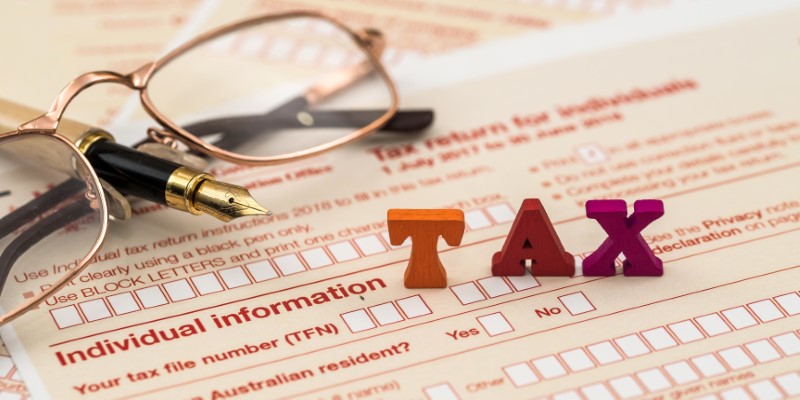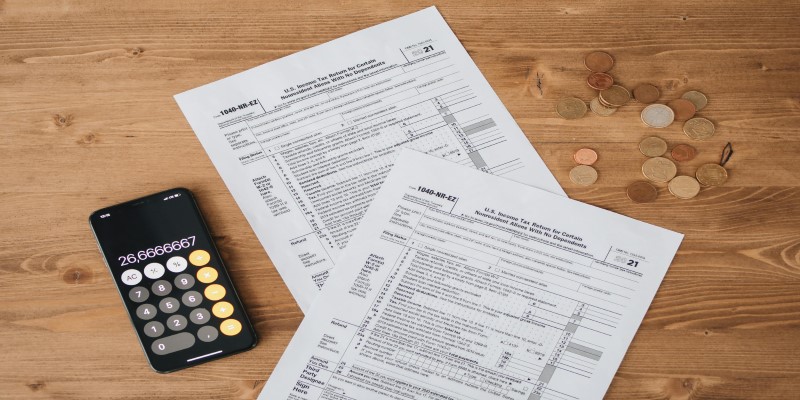
If you are a company owner, you have undoubtedly heard the phrase "tax depreciation" before. However, you may not be quite clear on what it means or how it's determined. One of the most significant concepts in corporate tax management is depreciation. Give this guide a read to get answers to all your questions. So, what are you waiting for? Lets begin!
Tax Depreciation: Explained
Tax depreciation can be termed as the amount of depreciation that a company is allowed to declare for a specific reporting period. Depreciation is the amortization of an asset's cost over some time or the useful life of the asset. Businesses have less taxable income to submit to tax authorities when they subtract the depreciating value of the property, they employ to generate revenue.
For instance, a ten thousand dollar purchase of new computer gear is made by a business owner. The computer gear will depreciate annually. Let's assume that it depreciates by 10% annually. Subsequently, the business owner is eligible to deduct from their tax bill a percentage of the machinery's dropping worth. In this case, the owner might claim a $1,000 annual depreciation deduction on their tax return. That company owner saves money on taxes as a consequence.
Which Assets Can be Depreciated?
The fact that there are regulations governing which assets and how much might be depreciated annually on an individual's taxes begins to add to the complexity.
Property types that include machinery, buildings, office furnishings, cars, and equipment are all subject to depreciation. Personal property is not covered. On the other hand, any propertysuch as an automobilethat is used for professional or investment reasons can be discounted if it is also utilized for personal use.
According to the Internal Revenue Service, an asset can only be depreciated if it satisfies all of these conditions:
- It needs to be a property that a business owns.
- It has to be utilized for a commercial or revenue-generating activity.
- The property needs to have a defined lifespan.
- It is necessary to anticipate that the asset will live longer than a year.
- Land is not considered depreciable, but some buildings and land improvements, like rental property, could be depreciated.
Calculation of Tax Depreciation
Generally speaking, for the calculation of tax depreciation, the Internal Revenue Service mandates that specific rules must be adhered to. The IRS specifies the precise depreciation method that must be applied based on the asset classification. Therefore, the Internal Revenue Service (IRS) has very strict rules on taxes for whatever we buy, including office equipment or buildings.
Depreciation is computed annually for tax reasons. The salvage value, the method of tax depreciation, and the usable life of an item are all taken into account during the calculation of tax depreciation.
Which Methods Are Used for Tax Depreciation?

Many widely used approaches exist for depreciation techniques. These techniques include the following: sum-of-the-years-digits, units of production, double-declining balance, and straight-line.
- Straight-line Depreciation
This approach is frequently employed when a more sophisticated depreciation strategy is not needed because of its simplicity. Over the asset's useful life, the expenditure amount is constant when using this strategy.
You can calculate straight-line depreciation by a simple formula. The formula includes subtracting the salvage worth of your asset (estimated) from the cost of your asset. Then, divide the resulting answer with the assets useful life.
- Dual-declining Balance
In contrast to straight-line depreciation, this depreciation technique involves greater asset expenses during the initial years of usage and decreasing depreciation expenses in subsequent years. Calculating the double-declining balance requires several procedures, including figuring out the depreciation rate, depreciation expenditure, end-period value, and so forth.
- Units of Production
Using this depreciation technique, the worth of an organization's revenue-generating assets is ascertained prior to the assets' degradation. This approach could be most appropriate if an assetsuch as machinery, vehicles, or equipmentoperates widely over an extended length of time.
To calculate the unit of production, first, subtract the salvage value from the original value and divide it by the production capability that is estimated. Once you get a figure from this calculation, multiply the figure with units for each accounting cycle to get the units of production.
- Sum-of-the-years Digits Technique
The SYD method is a more rapid approach for calculating an asset's depreciation (such as., higher depreciation expenditure in the initial stages and lower depreciation expenditure in later years). Several actions need to be taken in order to use this method:
- Determine the depreciable sum.
- Determine the total usable life.
- Determine the devaluation factors.
- Determine the depreciation for every year.
Tax Depreciation and Complexities at the State Level

Tax depreciation may easily grow complicated and time-consuming. This is mostly because so many states don't adhere to the federal regulations.
While a few states have detached themselves from the requirements of the present IRC or Internal Revenue Code, others have passed laws permitting partial conformance or conformity in certain tax years governed by federal regulation, yet others have opted to follow the current IRC. As a result, estimating depreciation has become more difficult and inconsistent.
Controlling Fixed Asset Depreciation
Effective management of fixed assets requires the use of appropriate depreciation software. Giving tax professionals the tools they need to promote automation and reduce complexities at the state levels. When selecting a solution, search for one that has the following qualities:
- An automated method and life fill-in option for assets that saves time during data entry.
- Assistance with a wide variety of depreciation techniques.
- The capability to add, modify, and remove assets with adjustable tracking and organizing settings and a simple document folder format.
- Almost infinite reporting options allow tax experts to design unique reports that are customized to the requirements of each customer.
The Bottom Line!
Tax depreciation spreads out the expense of assets over a period of time, saving firms money on taxes. Various techniques are employed to determine the annual deduction amount. Coping with tax depreciation may be challenging, particularly when state laws vary. Businesses may use specialized software to monitor everything and ensure that they are adhering to regulations, which makes things easier. In addition to saving time, this guarantees that they are paying the correct taxes.




